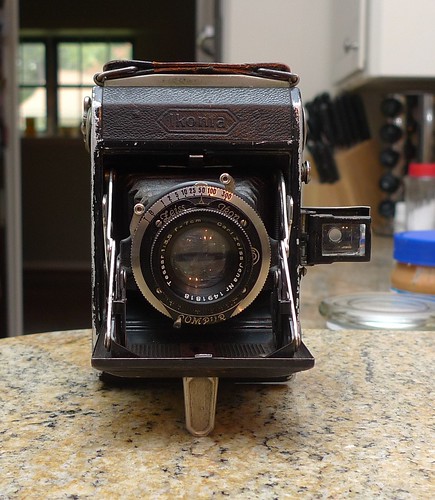The downside of old folding medium format cameras is that their bellows may develop pinhole leaks. Some brands are worse than others: Ansco and Agfa cameras are almost guaranteed to have leaks. Check before you buy! These are impossible to see with the naked eye, so your "I don't know anything about cameras" seller on ebay may not do a sufficient job.
In order to tell if you have light leaks, open the back and shine a powerful flashlight in towards the lens. If you have light leaks, you should be able to see tiny spots of light. When I say powerful flashlight, I use my Fenix high power LED with 235 lumens. Your mini-mag is likely not be sufficient.
Replacing the bellows:
Option 1: If the bellows are littered with leaks, the best thing that can be done is to replace the bellows. This can be moderately expensive and time consuming. It may cost more than camera is worth. The replacement bellow on my
Ansco Speedex cost $55 and the repaired cameras is probably only worth $40. I bought the replacement bellows from
Dennis Workman. He has some instructional You Tube videos, but it still takes a few hours.
Option 2: RTV black silicone can be used to patch a smaller amount of holes. I think it would be easiest to apply the silicone with your finger (with a latex glove on). Of course, you are going to have to keep your flashlight on during work so you remember where the leaks are. Leave the camera open until the silicone dries!
My Zeiss Ikonta A (circa 1930) currently has some light leaks:
 Effect of light leaks on photos
Effect of light leaks on photos:
Photos may look washed out:
You also may get ghostly streaks:
If the ambient light is low and you only quickly open and close your camera, you may not see a huge effect:





